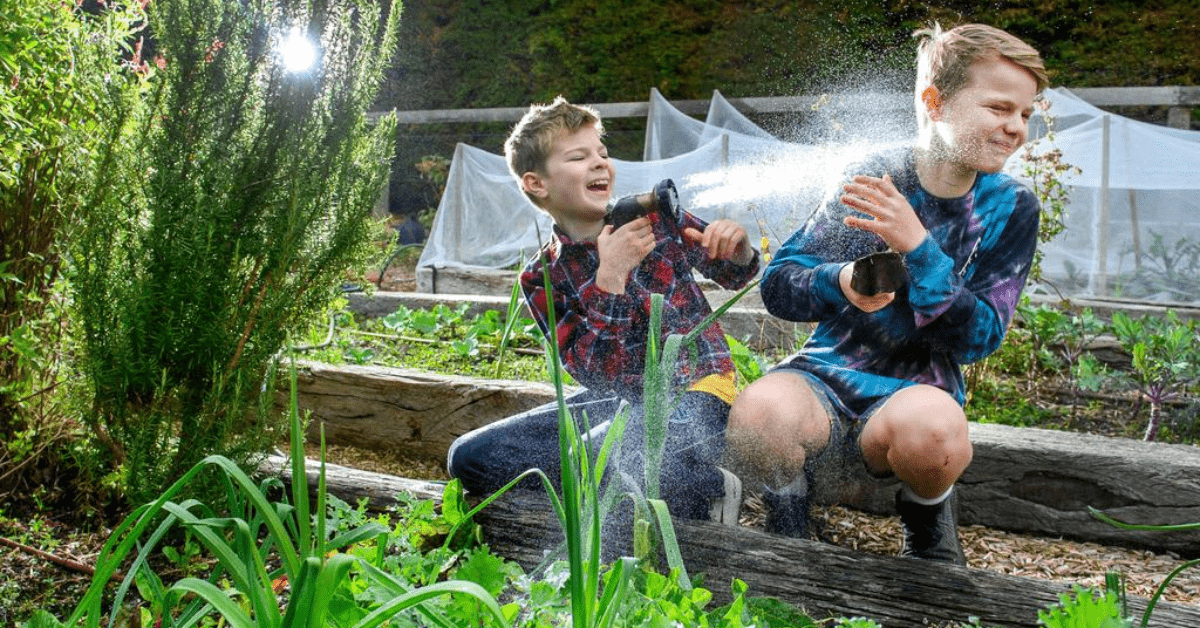Get Your Little Green Thumbs Excited: Tips for Creating a Kid-Friendly Garden
Finding activities that will keep your children interested and active can be difficult for a parent. Making a kid-friendly garden is one approach to fostering a love of the outdoors and teaching your kids about the environment. This will not only give your kids something enjoyable to do, but it will also be very good for their mental and emotional health.
I’ll give you some advice in this post on how to design a garden that will inspire your kids’ green fingers.
The Benefits of Gardening for Kids
Prior to learning how to design a kid-friendly garden, it’s critical to comprehend the advantages of gardening for kids.
1. Learning About Nature
Children can experience firsthand learning about the natural world by gardening. They can learn about the life cycles of plants, the value of sunlight, water, and soil, and how various garden organisms are interdependent on one another.
2. Environmental Awareness
Children who garden develop a feeling of environmental stewardship. They are taught the value of recycling, resource conservation, and caring for both plants and animals. Their increased awareness of the environment is a result of this information.
3. Physical Activity
Digging, planting, watering, and weeding are some of the physically demanding tasks involved with gardening. Children’s coordination, strength, and gross motor development are all aided by these exercises. They can exercise and breathe fresh air while outside in the garden.
4. Responsibility and Patience
Children learn the virtue of responsibility and patience via gardening. By giving plants regular watering, getting rid of weeds, and keeping pests away, they learn how to care for plants. Children learn delayed gratification and patience as they watch plants grow and get the rewards of their labor.
5. Sensory Stimulation
Children’s sensory development is stimulated by gardening’s multisensory appeal. They can taste the fresh produce they raise, feel the texture of the soil, smell the aroma of flowers, and hear the buzzing of bees. Their capacity for both cognitive and sensory processing is improved by this sensory encounter.
Planning Your Kid-Friendly Garden
Planning is the first step in making a garden that is kid-friendly. This entails selecting the garden’s location, size, and shape, as well as the kinds of plants you wish to grow.
When choosing a spot, choose one with adequate drainage and lots of sunlight. To make it simpler for your children to access the plants, you might also want to think about building raised beds.
The size and shape of your garden should be decided after the place has been selected. You should think about how much space you have and how many plants you want to grow. To make it simpler to access all of the plants, you might wish to build a route through the garden.
Finally, decide the plants you want to grow in your garden that are suitable for kids. Look for plants that are simple to grow and care for, such as flowers, herbs, and vegetables. If you want to give your garden a little more excitement, you might also want to think about adding a few plants that draw butterflies or birds.
Choosing the Right Plants for Your Garden
Choosing the proper plants is one of the most crucial steps in designing a landscape that is kid-friendly. Look for plants like tomatoes, cucumbers, herbs, and sunflowers that are simple to grow and manage. In order to give your garden some color and draw pollinators, you might also want to think about planting some flowers.
Keep your child’s interests and preferences in mind when selecting plants. Consider growing a few strawberry plants if your youngster likes them. Plant some herbs or veggies that they may use in the kitchen if they enjoy cooking.
Getting Kids Involved in the Gardening Process
Involving your kids in the gardening process is one of the finest methods to spark their interest in it. Allow them to assist with seed planting, soil preparation, and plant selection. Encourage children to provide the plants with water and to regularly check on them to see how they are developing.
Engage your kids in the upkeep of the garden as the plants start to grow. Make sure they understand how to prune the plants, get rid of dead leaves, and look for pests. They will learn useful gardening skills from doing this, and they will feel responsible and successful.
Gardening Activities for Kids
Kids’ fun and instructive activities can be found in plenty when gardening. Here are some suggestions to get you going:
- Create a scavenger hunt: Make a list of items, such as certain kinds of plants, insects, or flowers, for your children to discover in the garden.
- Paint rocks: Allow your children to paint rocks to be used as garden decorations or markers.
- Make a worm farm: By setting up a worm farm in the garden, you may teach your children about composting.
- Build a birdhouse: Build a birdhouse with your kids to attract birds to your garden.
Making Your Garden Safe for Kids
Safety should come first when designing a landscape that is suitable for children. Here are some suggestions to bear in mind:
- Choose plants that are non-toxic: Make sure the plants you chose are secure enough for children to handle and consume.
- Avoid using pesticides: Children and animals can be harmed by pesticides. Use natural pest control techniques instead.
- Create a play area: To prevent your young children from accidentally harming the plants, think about setting up a separate play area away from the garden.
Tips for Maintaining Your Kid-Friendly Garden
Once your garden is operational, it is crucial to keep it that way. Here are some suggestions to bear in mind:
- Water regularly: Water your plants frequently, particularly in hot, dry weather.
- Weed regularly: To stop weeds from taking over and competing with your plants for nutrients in your garden, keep it free of them.
- Harvest regularly: Harvest your herbs and veggies frequently to maintain the health of the plants and promote new development.
- Rotate your crops: Rotate your crops each year to avoid soil-borne diseases.
Conclusion
Making a garden that is appropriate for children is a pleasant and enjoyable hobby that can offer your kids a lot of advantages. You may make a garden that will inspire your little gardeners and teach them important lessons about the environment and taking care of living things by using these suggestions and tactics. So go outside and begin planting today with your kids!
Thank you for reading this post, don't forget to subscribe to our newsletter!


